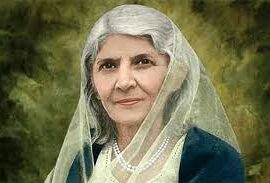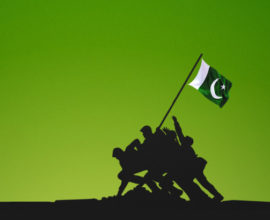Fall of East Pakistan: Options not Exercised
True mettle of a leader, political or military, is gauged when he faces adversarial situation(s), when a disaster seems imminent. When commoners lose hope and stumble to blunders, worsening the state of affairs, real leaders, showing grace under pressure, display true headship and come up with extra ordinary plans and strategies: which turn the table on the opponents or dull the defeat. Great leaders do not put their hands up, without having exerted. Was fall of East Pakistan unavoidably imminent? Wasn’t there any option(s) available for political and military leadership other than accepting a disgraceful defeat and subsequently signing an ignoble surrender?
Reflecting back at history, we find that fall of East Pakistan did not occur in days or weeks; in fact, when Ayoub Khan abrogated the constitution of Pakistan (1956), he laid the very foundation of the fall of Pakistan.
(waqt karta ha parwarish barsu, haadsa ek dam ni houta)
At that time, Huseyn Shaheed Suhrawardi, one of the founding fathers of Pakistan and erstwhile Prime Minister (1956 to 1957) shed tears, foreseeing (inexorably) disintegration of Pakistan. It is pertinent to mention here that Mr. Huseyn Shaheed shed tears on two more occasions: when he met Fatima Jinnah (when she threw keys to him from upstairs in Karachi; she had no trust in her guards deputed by Ayoub Khan) and when he (Huseyn Shaheed) was dethroned, mourning that he had a plan to liberate Kashmir which had been dismantled. Had Ayoub Khan not nailed the unity, touching constitution, our history would have been different.
Before the general elections which were held on 7 December 1970, the differences between Awami League and PPP were all time high, making the situation deeply precarious. Besides, when flood swept across Bangladesh, wreaking havoc, adversely affecting infrastructure, life and property of people: those trying times called for concerted efforts to save the injured and sick and rehabilitate them, bringing normality, not holding the elections. Taking as a God gifted opportunity, elections could have been adjourned for a year at least; and during that period, our political and military leadership could have ample time to analyze the issues and chalk out alternative plans to address the grievances of people and deflect wicked designs of internal and external enemies.
The process of rehabilitation could certainly have won back empathies of disgruntled brothers, thus nefarious plans of the enemies could have been exposed and thwarted. We could have avoided Waterloo, but our leadership self-centered, shortsighted, that opportunity was thrown into Bay of Bengal.
In the beginning of March when East Bengal Regiment (EBR) along with Mukti Bahini revolted, they massacred more than forty thousand people (in one night) who did not support the breakup of Pakistan. But after the Operation Clean up on 25 March, general amnesty was announced .That ill-advised and untimely amnesty allowed thousands and thousands of trained(by Indian army) and well equipped Mukti Bahini to cross into Bangladesh. After that when the process of disarmament was initiated, only the people loyalists to Pakistan surrendered their arms— only to be butchered (in utter misery) later by soldiers of EBR and Mukti Bahini.
At strategic level, the throaty claim of Lt. General Ameer Abdullah Khan, then Commander of Eastern Command of the Pakistan Army to defend every inch of land was totally flawed. Many local supporters, military commanders including Brig. Sultan, then Col. Sultan Ahmed, commanding 31 Baloch Regiment and scores of junior officers communicated through proper military channels the alternate option which was more workable during those desperate times. Even today, military strategists lament the fact that the strategic plan available for military leadership, was not exercised.
One of the plans envisaged the movement of the entire military forces and convergence between two rivers: Ganges and Brahmaputra —which are expansive rivers, not easy to cross, since there was no bridge on Ganges that time. The proposed positioning of our forces could have given them cushion in the presence of Nepal, Bhutan and through Chicken Neck to China, making our defense invincible. The fact that our navy headed by then Vice Admiral Sharif had established blockade, totally preventing Indian navy from any build up further augmented our defense.
In order to o counter this suave military move, the Indian army would have to devise another strategy and redeploy its army, consuming weeks and weeks. To support our army, locals loyal to |Pakistan were ready to dig trenches to impede any Indian military advancement. Had that option been exercised, there would be East Pakistan between two rivers, at least. The plan in question was also cited by former COAS General Musharraf (a major in 1971), in an interview, articulating that he would have moved his forces between two rivers.
Many military strategists still believe that the military plan could have ensured Pakistan an indomitable superiority and frustrated the Indian army in a prolong war. But General Niazi, other military commanders had other plans which did not entail any imaginable victory or a formidable fight.
In this backdrop, a very important question: who gave order to surrender and where is such a significant document carrying such order still remains shrouded in an evil mystery — even today. Yahya Khan kept on reiterating that he did not pass on any order to surrender. Even common soldiers who are alive today vividly recall that they were never told about any surrender by high commands; instead they were told that through train they would be ferried to Wahgah Border. Those well trained and committed military men still lament that they were not ready to surrender, and would have started attacking the Indian forces which had started landing in Dhaka. But, alas! No one contemplated that possibility.
At the political and diplomatic front, Mr. Zulfiqar Ali Bhutto was too desperate to grab power, even at the cost of country. At the UN, Pakistan was desperately looking for a UN Security Council Resolution. That opportunity was provided by Poland, submitting a resolution for discussion on December 15, urging India and Pakistan to accept an immediate ceasefire and withdraw the forces from each other’s territory and transfer power to the representatives elected in December 1970. It was a golden chance to avoid the dishonorable surrender and the subsequent imprisonment of thousands of our soldiers and civil servants. But the ulterior motive of Zulfiqar Bhutto to grab power and humiliate Pakistan army, provoked him to lambast the UN for acting belatedly and tore the resolution, thereby scratching yet another option to save the fall of East Pakistan.
The writer can be reached at sliklight55@gmail.com





A wonderful article written…touched my heart deeply.
thank you